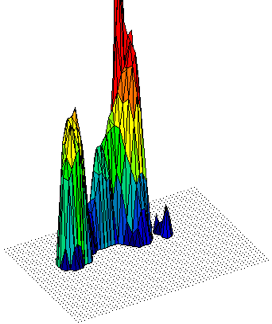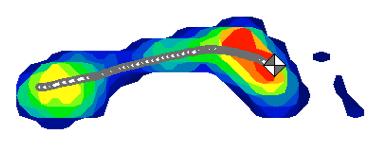Sports Biomechanics
Pressure Plate Gait Analysis and Correction with Orthoses
Are you Prone to over-pronate?

If you overpronate, like many runners out there, you will know what a pain it can be. Overpronation, for those of you not familiar with the term, is an inward rolling of the foot during a running stride. While all runners pronate to a certain extent, some of us (usually with flat feet) turn our foot too far inward when we push off. This can lead to a number of injuries, including shin splints, IT band syndrome, and heel spurs.
An over pronated foot, or flattening arch, causes knees and hip to turn inwards. This results in abnormal torsion in the legs and feet. It can be responsible for Achilles tendonitis, ITB syndrome, lateral tracking patellae and low back pain.Are you a Supinator?
Are you a Supinator?

Some athletes use the outside edge of the foot and do not pronate enough. Muscle and joint pains can eveop due to lack of shock absorption in this foot type. Common symptoms include ankle sprains, peroneal muscal strains or tendontis and heel pains. Pressure plate data, showing abnormal peak pressures in the a left supinated forefoot (see image, left). This type of pressure can cause the formation of pain in the metatarsal, stress fracture, bursitis and poor toe function. An An athlete depends on even forefoot pressure for propulsion forwards from the toes.
The Pressure plate graph (see image, right) shows higher pressures in the left forefoot on the outside edge of the foot. In normal circumstances this area has much lower pressures; The highest pressures are normally seen on inside of the foot.
This pressure plate data shows that the big toe is not functioning normally. This usually means that running speed is reduced in an athlete. Muscle and joint pains can occur in the leg and foot as the athletes has to compensate as the big toe (hallux) is not performing properly.
The linear grey curve showing that this foot supinates, unfortunately a supinated foot has less shock absorption from the impact of running, than a pronated foot.

The sacroiliac joint

The sacroiliac joint assessment is an important part of gait analysis. The sacroiliac joint is between the sacrum, at the base of the spine, and the ilium of the pelvis, which are joined by ligaments. It is a strong, weight bearing synovial joint with irregular elevations and depressions that produce interlocking of the bones.
Inflammation of this joint may be caused by gait abnormalities and is a cause of disabling low back pain. Gait analysis can show a higher, lower, forward or backwardly displaced sacroiliac joint. An exercise program and osteopathic manipulation can also encourage normal symmetrical motion of the sacroiliac joints.
Orthoses
One way to counter problems caused by over-pronation or over-supination is by wearing a foot orthotic specifically designed to control your running gait. Motion control orthoses support the flat arches that most over-pronators possess, helping them to have a more controlled gait. A different orthotic prescription helps to correct the pressure on different parts of the foot for over-supinators.
Fitter Feet may also prescribe orthoses, which assist in creating symmetrical gait, for sacroiliac joint problems.
Costs for Orthoses